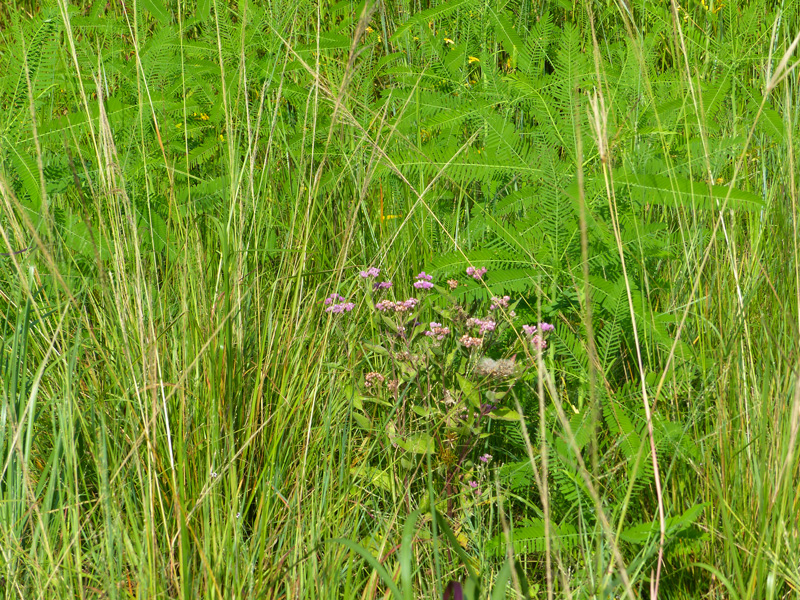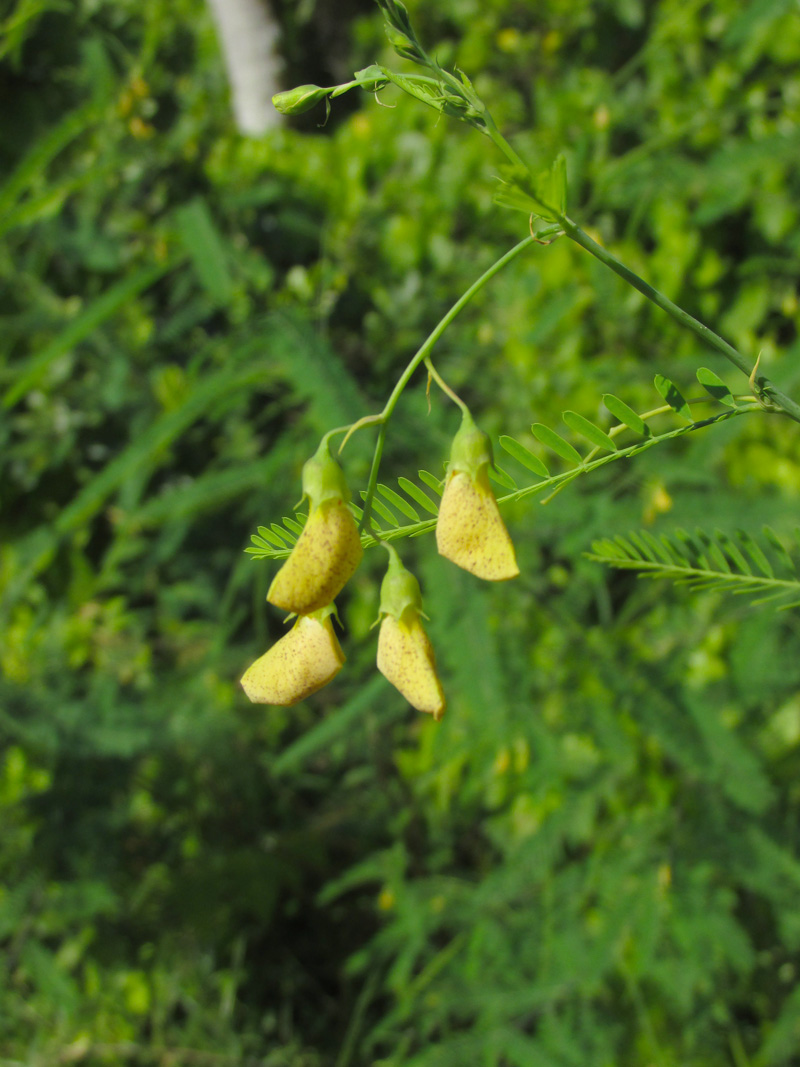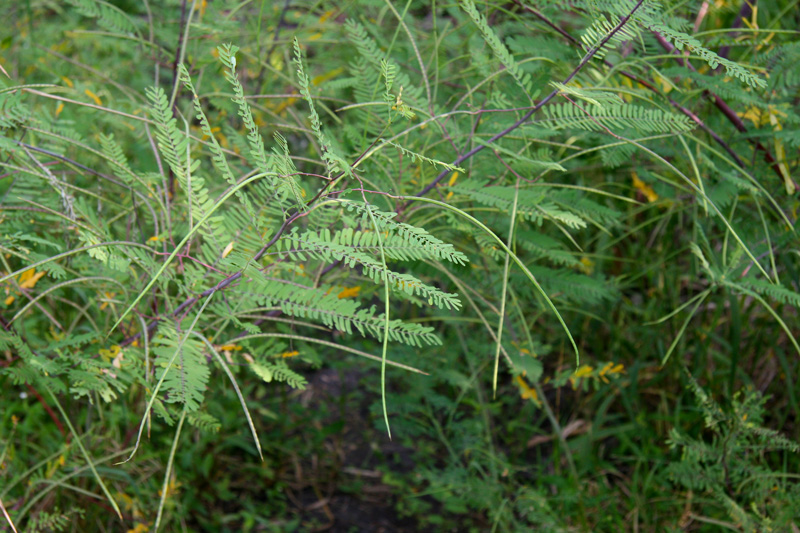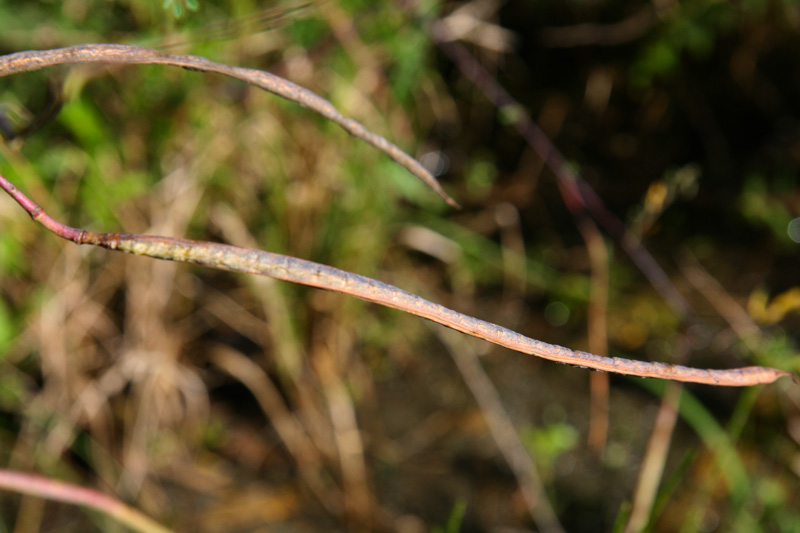
We saw danglepod (Sesbania herbacea), growing along with sweetscent (Pluchea odorata), in a disturbed area near the pedestrian path at the Fellsemere Trailhead when we visited on 7-15-2018. Danglepod is a native annual of moist, disturbed places.
In 2008 when the 5-acre abandoned citrus grove on the south side of Oslo Road at the Oslo Riverfront Conservation Area (ORCA) was cleared and excessively over-watered, danglepod quickly (and thickly) grew to be more than 10′ tall.

Other common names for this plant include coffee-bean, coffeeweed, pea tree, hemp sesbania, tall river hemp, and Colorado River-hemp. North American indians extracted a strong fiber (“hemp”) from the bark, and this plant ranges from California throughout the southeast to Pennsylvania.
Its alternate leaves are even-pinnately compound with lots and lots of leaflets (20–70).

Its yellow flowers are streaked with subtle maroon/purple markings and grow on long stalks.


Flowering and fruiting can occur simultaneously in this prolific plant.

Its long (4-8″), dangling 4-sided pods are tipped with a small beak.

Pods are brown when ripe and can contain 30 to 40 seeds. The seeds are eaten by quail, turkeys, mallards, limpkins, mourning doves, and other granivorous birds.
 A
A
Like many plants in the pea family, Fabaceae, danglepod has extrafloral nectaries, nectar-producing glands separate from the flowers that attract insects that “protect” the plant from herbivory. Extrafloral nectaries along the leaf margins of dangled attract beneficial insects including lady beetles and parasitic wasps.
Danglepod is a native, fast-growing annual that provided “bird-seed” and nectar for beneficial organisms, but it can get weedy in moist, recently disturbed places.
